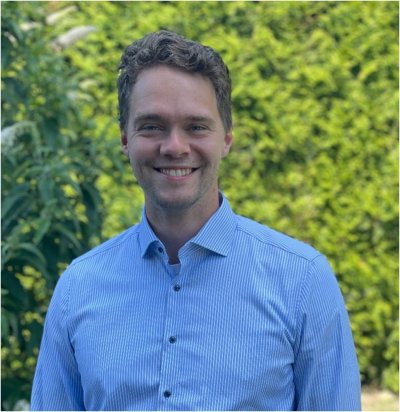The industrial application of methane pyrolysis
Tomas Kreuger is a PhD student in the department Sustainable Process Technology. Supervisor is prof.dr. S.R.A. Kersten from the Faculty of Science & Technology.
 In this work, first steps towards an industrial application of methane pyrolysis are made. The overall goal of this work is two fold. First, it is aimed to demonstrate a continuous lab scale pyrolysis process. Second, it is aimed to identify the most important parameters affecting the viability of an industrial methane pyrolysis process. In chapter 2 an experimental method is developed in which the inherent methane pyrolysis and carbon deposition kinetics are measured on a single, nonporous, unfunctionalized α- Al2O3 particle. A fixed bed setup (gram C per day scale) was also used to characterize various aspects of methane conversion and side product formation. The gasification reactions are investigated using the same method as in chapter 3, again on nonporous, unfunctionalized α- Al2O3 particles. A method is presented to predict gasification rates as function of the pyrolysis conditions. In chapter 4, the deposition kinetics are expanded to various types of porous particles. The influence of particle characteristics on the carbon deposition within the particle were characterized. Additionally, mass transfer within the particle was investigated. Using this knowledge, a simple particle model was then presented. Using the information obtained in chapters 2-4, a continuous kg C per day lab scale setup was designed and constructed.
In this work, first steps towards an industrial application of methane pyrolysis are made. The overall goal of this work is two fold. First, it is aimed to demonstrate a continuous lab scale pyrolysis process. Second, it is aimed to identify the most important parameters affecting the viability of an industrial methane pyrolysis process. In chapter 2 an experimental method is developed in which the inherent methane pyrolysis and carbon deposition kinetics are measured on a single, nonporous, unfunctionalized α- Al2O3 particle. A fixed bed setup (gram C per day scale) was also used to characterize various aspects of methane conversion and side product formation. The gasification reactions are investigated using the same method as in chapter 3, again on nonporous, unfunctionalized α- Al2O3 particles. A method is presented to predict gasification rates as function of the pyrolysis conditions. In chapter 4, the deposition kinetics are expanded to various types of porous particles. The influence of particle characteristics on the carbon deposition within the particle were characterized. Additionally, mass transfer within the particle was investigated. Using this knowledge, a simple particle model was then presented. Using the information obtained in chapters 2-4, a continuous kg C per day lab scale setup was designed and constructed.
Finally, in chapter 6 various industrial process configurations are evaluated. Using the knowledge obtained in all the earlier chapters, numerous reactor and process models were constructed. By evaluating the energy and carbon efficiencies of these processes, the most promising were selected and evaluated further. The important parameters driving the viability of these processes were presented. Lastly, a comparison to the industrial standard was presented.

